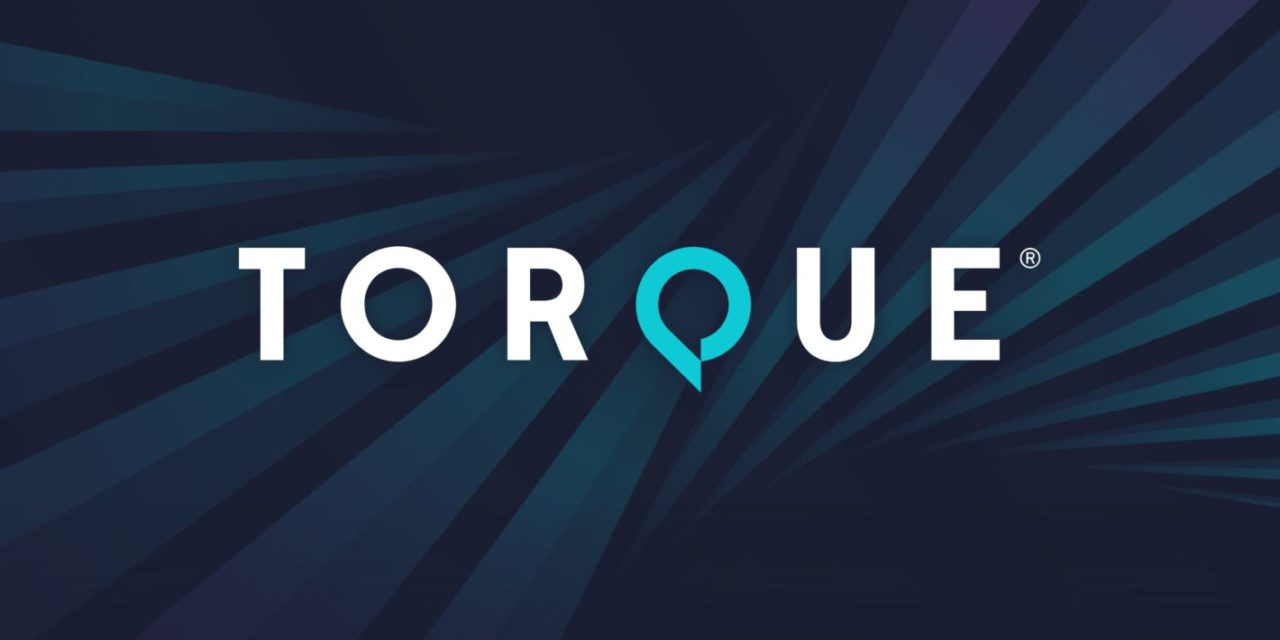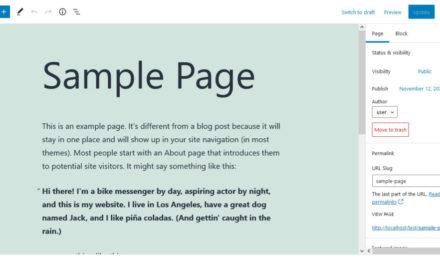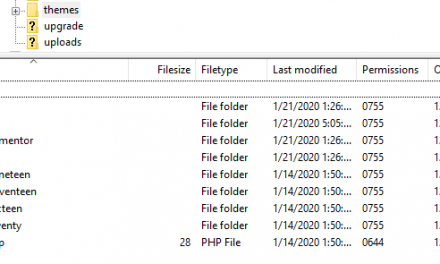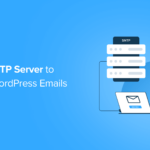Welcome to Press This, the WordPress community podcast from WMR. Here host David Vogelpohl sits down with guests from around the community to talk about the biggest issues facing WordPress developers. The following is a transcription of the original recording.
Powered by RedCircle
David Vogelpohl: Hello everyone and welcome to Press This the WordPress community podcasts on WMR. This is your host, David Vogelpohl, I support the WordPress community through my role at WP Engine, and I love to bring the best of the community to you hear every week on press this as a reminder, you can find me on Twitter @wpdavidv, or you can subscribe to press this on iTunes, iHeartRadio, Spotify, or download the latest episodes at wmr.fm. In this episode, I’m really excited for this and this is gonna be really cool, especially if you’re a WordPress developer. We’re gonna be talking about starting your own SaaS business using your WordPress dev skills. And joining us for this conversation as someone who’s done just that, I’d like to welcome to precipice of gel form, Mr. Corey Maass. Cory, welcome to Press This.
Corey Maas: Thank you so much.
DV: So glad to have you here. I know that you know there’s a lot of people out there that are, you know, building complex sites for clients and maybe their stakeholders that within the company they work for they think like maybe I can make something for me my own businessman SAS application and so for those listening, what Cory is going to share is really his thoughts on why WordPress developers have the skills to do this builder and SAS business, the role of WordPress and quote SAS like builds and the types of SAS builds you can consider and some powerful lessons he learned along the way. All right, well, Cory, I’m gonna ask you the same question I asked every guest. Could you briefly tell me your WordPress origin story? When did you first use WordPress?
CM: Sure. So I’ve been building websites since the late 90s. So I’m getting up there and web developer years. Back in the day, it was web design or being a webmaster. And over the years, I taught myself JavaScript and then I taught myself other programming languages. And around 2008 I was working for an agency that taught me php. So when WordPress came along, it kind of fit into the programming that I was already starting to do. And it took off pretty quickly in my world. But because I came from this developer background, and this love of building apps, I actually lucked out. Most people I think started with WordPress and building what some people call brochure sites are very simple, straightforward websites or blogs. But actually my first WordPress client was tough mudder some people are familiar with the Spartan Races or there’s there’s a number of different of these extreme races that people do and tough. Mudder is was a company and based in Brooklyn that did this and my first word big WordPress project was actually for them building an intranet. So right off the bat instead of just building a landing page and a contact us form. I was building complex file upload handling and sharing permissions and all this stuff. And so right away, and this was, I don’t know 2012.
DV: So 10 years ago. it was it before or after custom post types and meta fields.
CM: Right. And so we were, you know, admittedly hacking the heck out of WordPress, but you know, one of my first builds was already doing more with WordPress than I think a lot of people realize what it can do. And early 2000s along my journey, pre WordPress, like a lot of other people I was inspired by 37 signals and Joel Spolsky. And kind of the, the first wave of the phrase The term software as a service or SaaS and this concept that you could build a website that people sign into and pay a subscription for, and you can make money from it. And so these two things have always kind of been parallel for me, especially in the last 10 years as WordPress has matured. And then also SAS apps have become more prevalent, and, you know, even my mom knows what a SAS app is now. So I think it’s a pretty common coincidence.
DV: Okay, yes, this is 2012. So this is after custom post types is released in 2010. But before the REST API and CLI to your point, I’m guessing you’re that’s probably a good route of how you might think of it as hacking but then I guess, your key point in origin stories, you kind of came from the application software development background, and so you kind of came into it in this very application centric way. Now you’re with a company called Gel Form, what does Gel Form do and what do you do there?
CM: Gel Form is me, I am Gel Form. Years ago when I was starting out as a freelance developer, but I was also producing books and print work for companies and then I was basically doing whatever I could do creatively, you know, but I needed a name. So gel forum was born. These days for the most part, it’s a one man agency building, WordPress websites, WordPress products, and then SaaS apps. Alright, so I’m talking to the person at the top down. I love that. And the bottom I am the president of the bottom the side Yeah.
DV: Love that. Love that. But that’s cool to hear. And thank you for sharing. So I’m curious, like, you know, you mentioned who by the way, when in the 90s he started Do you remember
CM: probably around 97
DV: What’s my digital career? 1991 I was probably right, right around the same time late 96. Actually,
CM: yeah, I went to college in the fall of 95. And that’s when I saw my first website, the kid across the hall, took me into the computer lab, and said, you know, there’s this internet thing you’ve probably been hearing about and I said, Oh, this is a fad. It’ll never last. But I remember seeing seeing this but I I grew up in an era of DIY ethos, so you know, punk rock bands, and grunge and, and all that kind of stuff. And I grew up in a pretty small town in Maine. And so there was very much this attitude of do it yourself. And so I already had this mentality and so as soon as I saw websites, and especially because the first thing many of us did back then was go look up our favorite bands, and that kind of thing was I said, Well, if I’m going to be well, and I admitted that I was also pursuing a music career at the time. I said, Well, if they can be on the internet, so can I and so it sparked this interest immediately of, you know, if they can build it, I can build it. And so I that’s when I started teaching me how to build websites.
DV: We had another guest with a website, website origin story with a building origin story. Also from the music career. Was Vito Batterien. Not that long ago, I actually came up with the AI in any case, so don’t be a little bit though like this notion of DIY and like you know, just do it yourself. But like, why should WordPress developer you know through that lens, why should WordPress developers consider building a SAS centric product offering at all like if they’re like, because their skills are aligned? The skills plus the financial aspect, like why should WordPress builders consider that specifically for a business?
CM: Sure. So there are a couple of things there. One is most WordPress developers are entrepreneurial by nature, right? Like that’s unless you work for a big agency and you are comfortable plugging away every day. One of the things that’s built into the WordPress Yeah, culture and community is a sense of doing it yourself. There’s a lot of freelancing there’s a lot of self taught people. And there’s a lot of outreach and encouraging people who, you know, might come from economically challenged backgrounds or cultures or situations. And WordPress is often encouraged as a way to lift themselves up or give them a voice or what have you. So I feel like there’s this it’s all kind of built into WordPress. And then the other side of that is that WordPress is what now 40% of the internet or whatever the latest stat that they brag about. But because it’s so prolific, there’s nothing but good documentation. It’s not true. There’s every problem that you could encounter with WordPress at this point has been documented. So there’s a great community out there. And there’s a lot a lot of good writing about how to solve every problem.
DV: So let me pause you there for a minute. It sounds like the first point is basically that it’s going to why WordPress developers and why this is like kind of leaning into that entrepreneurial spirit side. And then also kind of thinking about the culture and WordPress of kind of like almost this bootstrapping mentality like I can do this and there’s people around to help. And so I could see how you would think that would give you like a good network as you start to think about SAS. But I’m really curious about the skill side because you talked earlier about how a lot of people start in brochure sites and a lot of our guests actually that was their origin story, actually. And so I’m really curious about it from the kids skills perspective, but we’re gonna take our first break, we’ll be right back. Time to plug into a commercial break. Stay tuned. For more press this just a moment. Oh, everyone, welcome back to press this the WordPress community podcast on W EMR. This is your host, David Vogel Paul. I’m talking to Cory moss of Joe forum about starting your own SAS business with your WordPress dev skills. Cory right before the break. You were explaining that, basically, you know, why should we press can developers consider building a SaaS application? You mentioned how they’re kind of entrepreneurial by nature. There’s this really supportive community. I’m guessing you’re kind of maybe building up to the skill side, but like, Do you think that’s a key reason? Or how do you think of that?
CM: That’s true. So yeah, the other part of why WordPress is a good option or what can be a key component to building SAS apps is the fact that it solves a lot of what people think as a SAS app out of the box. And this was something that had to click for me a few years ago, but for a long time, I was doing WordPress development work during the day as a day job and then nights and weekends. I was building SAS apps using different frameworks to scratch my own entrepreneurial edge. And then there are cake and Laravel things like that. Correct. Well, and before that Zen Sure, sure. Some of you know you forget how old I am. But there was an evening when I was once again building a user login and I’m like, why am I doing this? You know, WordPress has built in user registration. And that was kind of when it clicked for me that this that I was doing redundant work here. And so I really started looking at what it is that makes up a SAS app. Now, SAS these days is is just about anything, you know, most of the applications. That’s not right, a lot of the applications that we signed into that’s not right. Either. A lot of the applications that we use every day are websites that we sign into there, there was a time when you always had to download Photoshop, or you had to download Microsoft Office. But more and more, you’re signing into Canva or you’re signing into Google Docs to get done all of the things that you need to do day to day on the internet. And this is where I realized that WordPress solved a lot of these problems where essentially you were there’s a developer phrase called crud, which stands for create, retrieve, update and delete and it’s one of the building blocks of most of the applications that we use. You sign into Google Docs and you create a new doc later you retrieve it because you want to review it or you want to share it. You make updates and when you’re done with it, you might delete it although the idea of deleting anything on the internet is becoming more and more obsolete.
DV: Everything sticks around forever.
CM: Right? For better or worse. But the the pattern of crud is well defined in WordPress, you create a new post you retrieve a new post you publish it and delete it. And then with custom post types and custom fields, I realized that you know these could basically be anything. So if you wanted to create a SAS app that was kind of like Google Docs, you could have users sign into WordPress. Create a post just like a doc, update it share it. Other people could sign in and update it and deleted at the end of the day or whenever. And following this pattern. WordPress fits a lot of what we do with SaaS apps now it’s not great for you know, b2b API based, you know, data flying back and forth between computers and that kind of thing.
DV: You’re kind of, you know, you’re kind of bridging into my next question a little bit here. And it’s interesting to hear you talk because I’m like reliving 2013 through 2015 is by agency was kind of shifting more of our application work to WordPress for those very same reasons. And thank you for the trip down memory lane. There are probably a lot of other folks had that same feeling but like, you know, obviously WordPress isn’t really known as like, oh, I mean, I think it is no, but I’m just saying like, there’s other frameworks that are more known. As being quote application frameworks. So like, you know, and I get that you’re adding, you know, custom plugins, or maybe even off the shelf plugins to introduce functionality, logic, things like that into these builds. How do you think about it, like you have these PHP skills, you have the PHP application framework skills, so what do you think about like if you’re going to build an app like when to use WordPress versus other stacks, like when and why WordPress?
CM: Sure. And that’s where as a developer as a product builder, you you have to sit down and consider it and WordPress is not always the perfect answer. But if you are building something that users are signing into, and then interacting with WordPress, often as a good option, and as you brought up, there’s 50,000 plugins in the plugin directory. And this is why I’m advocating more and more for people to at least think about WordPress as a platform for building SAS apps. is because of these plugins. So 10 years ago, when I was building an intranet for Tough Mudder It was nothing but custom code and using jQuery to hack for UI and that kind of thing. Whereas these days I set up a WordPress website somewhere, install one of my favorites, called theme My Login but there are many that allow customization of the login form or a custom login page all together. So right there, you’ve got a homepage and the ability for a user to register for your website and sign in and see my login even comes with a dashboard page that has nothing on it. But you know, right there to me, you’ve solved a lot of the very basics, basic building blocks of sass apps, which is user registration and logging in. And then talking about the crud pattern again. If you let’s say you wanted to emulate Google Docs another you know my example from before. You can use plugins like ACF front end, which is advanced custom fields front end, and that puts a form where a user can view it without getting into the WordPress admin and create a post and and do something with it and and then you as the admin can interact with it using advanced custom fields on on the backend or you know, any number of other plugins restricted content Pro that that creates a an admin area for users to sign into and even has built in support for taking payments and subscriptions and stuff like that.
DV: So, to be around was off it sounds like you’re kind of thinking like okay, well there’s these off the shelf plugins that if I’m comfortable with using I can rely on and I’m guessing because we’re impressed. I think it’s like 42%, or whatever, whatever. But because it’s so big, even though they’re kind of maybe designed, maybe the whole ecosystem might be a little bit more static sites and trick. You can use these pieces in order to build out an application and a SAS like experience for someone on the front end.
CM: That’s exactly right. And it’s not again, it’s not the magic bullet. There’s known scaling issues. If you if you really start to hammer, a WordPress site that is not properly cached and stuff like that. And it doesn’t solve every problem. Like I said, you know, maybe it’s not perfect for I don’t know, banking or, you know, Twitter if you’re going to if you’re going to point the firehose at a WordPress instance of you know, a gajillion tweets per second.
DV: Personally I can tell you that it had blisters.
CM: Exactly. But what I’m finding more and more is, you know, the standard problems that are out there or a lot of the types of apps that people start with or expand upon project management, to do lists,
DV: the aplique like business applications, kinda like you’re talking about like this, the business has a need and you think about fundamentally solving it. I’m really glad you mentioned the official plugin. My favorite WordPress build I’ve ever done was a URL shortener using pretty late and I basically no routed the domain, the root of the domain and every public page, and the only purpose of the WordPress instance is to act as a URL shortener. It took me seven minutes to build it, but it is one of my I use it all the time. Because I have custom shortened URLs and slugs
DV: Yeah. And like, oh, no, but I have and this incredibly effective and I’ve had that thing for probably, I don’t know, maybe eight, nine years or so maybe a little less but I really enjoyed it. And you know, it’s it’s such an interesting example that I like to share with people because I do think people of course, a lot of times when they think about WordPress, they really only think about it in that brochure way. And of course, the problems that businesses bring to developers or agencies or freelancers or whoever are often complex. And so I think, you know, kind of shifting those problem solving skills into this notion of entrepreneurship and building value for yourself. Really glad we’re covering that here today. I do want to talk to you a little bit more about your build stack though. But we’re going to take our last break and we’ll be right back. Time to plug into a commercial break. Stay tuned for more press this in just a moment. Well everyone welcome back to press this WordPress community podcast on WMO are we’re interviewing Cory most about starting your own SAS business with your WordPress dev skills. Cory right before the break. We were talking a little bit about considerations on when to use WordPress versus other stacks. And I’d say from like the high level it sounded like you were kind of listing out the functionality you might need in your build, looking at what WordPress has inherent in it, looking at off the shelf plugins, thinking about it in your own perhaps custom plugins that you might add to it. And so I’m just curious, you know, as you think about building a highly functional website using WordPress or shows a SAS app using WordPress, what are your go to towards like, you mentioned ACF, but like, like what are you using like in almost every one of those
CM: right so these days, I am a huge fan of Beaver Builder, the Page Builder Elementor is a good one too. And there you know, a dozen others build a SaaS
DV: hose are incredibly valuable, but like what’s the SaaS connection?
CM: Sure. So again, thinking about the crud pattern, you need to collect data or create data, or you need your user to be able to create data and then you need to be able to display it. So I’m a big fan of again, ACF front end. Gravity Forms is another good one that’s extensible. And so these are ways to put a form on the page without using code to let a user input something. So if they’re creating a post, or if they’re creating a tweet, or if they’re creating a to do item, what have you. This is a way to have them, create it and stick it in the database, right and then you need to display it somehow. And this to me is where Beaver Builder comes in. So a lot of themes are ready for you to add in a blog posts, but they’re not necessarily ready for you to add custom fields, which is what you might use a form like ACF front end to do. But Beaver Builder and Elementor and some of the better page builders are equipped to connect to custom fields. And so it’s a quick and easy way without writing code and without having to style things because of course they come. The whole point is that they come out of the box looking pretty good to display the data that the user put in.
DV: I’ve noticed so many people to do similar approaches. I was just curious why you listed that there that’s that’s cool to hear. What else is in your your build stack for these types of builds?
CM: So like I said, See, my login is always the first thing I reach for. Just because right out of the box, it creates a login page. User Registration password reset, so I never have to write those those things again and and it just makes me smile. That I never have to write that stuff again. Because if you’ve built lots and lots of web apps, especially by hand back in the day, you know that that’s the first place that you have to start. You have to do it over and over and over again. And then the nice one of the nice things about the WordPress ecosystem, right is that most of these plugins are free or start from free. And so like see my login, you install the free version and you’ve got user registration right there. But for 20 bucks or something this is turning into an ad for thing my login for not a lot of money you can buy the add on that lets people use social accounts to sign in. So one of my other it’s not technically a SAS app, but it’s actually an online game. I have people, a lot of people who are older and so they are less tech savvy and are more comfortable using like Facebook sign in or or Google Sign In. And so I don’t again, I don’t have to build that I don’t have to mess around with OAuth or, you know, API’s or anything like that i for 20 bucks, I install a plugin. I get some API keys I plug them in and now my users can sign in. So to me right there. That’s, you know, the first 50% of what I build for most of my websites.
DV: I wish I had like a cash inserter on my computer and I could just put 20 bucks in it to like get my next project and a little faster. I know right? Yeah, I think it’s a I mean sure the the my login books, I love dimensions, but I think it’s such a salient point to just think about it from like kind of getting back to the root of the show, which is that you know, you’re using these skills and these types of tools or these very tools in your day to day job creating WordPress sites. And so leveraging that to kind of lean into that entrepreneurial spirit, entrepreneurial spirit in WordPress and do that to start your own application. That’s, you know, maybe more than than just a content site, if you will, and it has an automatic income. I could totally see those parallels there. This has been a really interesting career. Thank you so much for joining us. today.
CM: My pleasure.
DV: Yeah, happy to have you of course. If you’d like to learn more about what Corey is up to please visit gelform.com. Thanks, everyone for listening to press this WordPress community podcast on WMR. This has been your host David Vogelpohl, I support the WordPress community through my role at WP Engine. And I love to bring the best of the community to you here every week on Press This.











